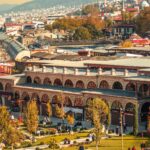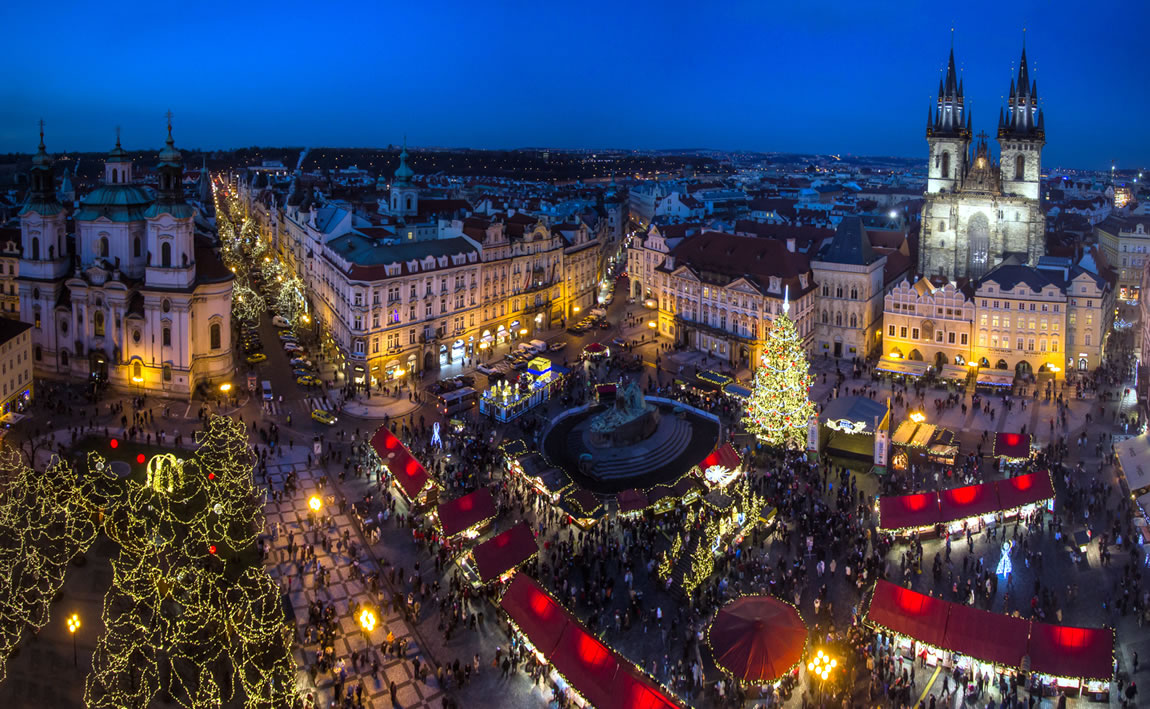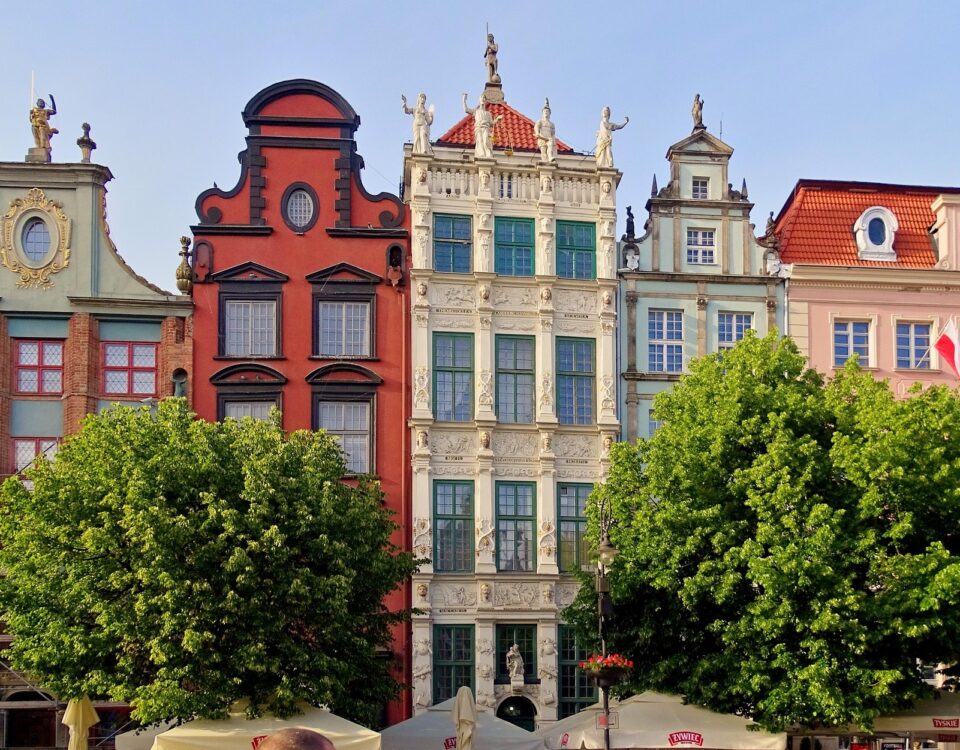
Autumn in Eastern Europe: Weather, What to Pack & Top Destinations
2025-11-01
10 Incredible Eastern European Festivals You Can’t Miss
2025-11-07Eastern Europe Winter Travel: Magical Christmas Markets & Ski Resorts
Every December, the cobblestone streets of Eastern Europe transform into open-air galleries of light and sound. The Christmas markets here are not just shopping destinations — they are cultural festivals celebrating warmth, craftsmanship, and history.
When the first snowflakes descend upon Eastern Europe, an unmistakable winter enchantment takes hold. Streets once bustling with commuters transform into glittering Christmas villages, mountain peaks beckon with pristine ski slopes, and centuries-old cities glow with festive warmth. Unlike the polished commercial glamour of Western capitals, Eastern Europe’s winter feels deeply authentic, intimate, and steeped in cultural memory.
From the fairy-lit squares of Prague and Budapest to the dramatic Carpathian slopes of Romania and Bulgaria, this region delivers a winter experience that seamlessly merges heritage, hospitality, and adventure.
Best Time to Visit Eastern Europe: A Complete Season-by-Season

Eastern Europe Winter Travel
The Festive Heartbeat: Christmas Markets of Eastern Europe
Few experiences capture the spirit of European winter like wandering through a Christmas market with a cup of mulled wine in hand and the scent of roasted chestnuts in the air. Across Eastern Europe, these markets embody a sense of tradition that feels both familiar and unique — an atmosphere where folklore, craftsmanship, and celebration coexist.
1.Prague, Czech Republic – Gothic Grandeur and Holiday Glow
The Old Town Square in Prague becomes the epicenter of Christmas joy, with its Baroque facades draped in golden lights. Wooden chalets line the square, selling hand-blown glass ornaments, embroidered linens, and local pastries. The towering Christmas tree, sourced from the Czech countryside, stands proudly beside the Church of Our Lady before Týn — a vision of medieval magic. Visitors often pair market strolls with evening concerts at St. Nicholas Church or cozy dinners in traditional Czech taverns serving svíčková and goulash.
Start exploring now 👉https://triptoeast.com/autumn-in-eastern-europe-guide/
2.Budapest, Hungary – Tradition Meets Elegance
Budapest’s Vörösmarty Square transforms into a haven of culinary indulgence and artisanal craft. The Budapest Christmas Fair, one of Europe’s most celebrated, highlights Hungarian craftsmanship through woodcarving, pottery, and leather goods. The air fills with the aroma of chimney cakes (kürtőskalács) and spiced wine, while the St. Stephen’s Basilica market dazzles visitors with 3D light projections and an ice rink framed by historical architecture.
3.Sibiu and Brasov, Romania – Transylvanian Wonderlands
In Sibiu, the grand Piața Mare square glows with thousands of lights reflected in freshly fallen snow. The Sibiu Christmas Market, inspired by German traditions, offers homemade sweets, local cheeses, and folk performances. Not far away, Brasov welcomes travelers with carolers, artisanal stalls, and the picturesque backdrop of Mount Tâmpa. Both cities blend their Saxon heritage with Romanian warmth, creating a uniquely welcoming atmosphere.
4.Riga, Latvia – Birthplace of the Christmas Tree
According to legend, the world’s first decorated Christmas tree was raised in Riga in 1510. Today, the Riga Christmas Market honors this legacy with handcrafted gifts, amber jewelry, and hearty Baltic dishes like grey peas with bacon. The medieval skyline and soft snow give the entire old town an almost storybook beauty.

Eastern Europe Winter Travel
The Alpine Edge: Skiing and Snow Adventures in Eastern Europe
For thrill-seekers and winter sport enthusiasts, Eastern Europe’s ski resorts deliver both adventure and affordability. From the Carpathians to the Tatras and Rila Mountains, the region combines well-groomed slopes, charming lodges, and an authentic local feel.
Borovets, Bulgaria – A Royal Legacy of Snow
Located just 70 km from Sofia, Borovets is Bulgaria’s oldest and most developed ski resort. Once a royal hunting retreat, today it boasts 58 km of ski runs, modern lifts, and a bustling après-ski scene. Visitors can also explore the nearby Rila Monastery, a UNESCO World Heritage site, blending spiritual and natural beauty
https://en.wikipedia.org/wiki/Rila?utm_source
Straja, Romania – Carpathian Serenity
A favorite among locals, Straja offers over 20 km of trails surrounded by pine forests. It’s a more intimate alternative to Western resorts, with cozy chalets, authentic Romanian cuisine, and options for night skiing. The laid-back atmosphere makes it perfect for families and couples seeking a peaceful retreat.
https://en.wikipedia.org/wiki/Straja?utm_source
Jasná, Slovakia – Heart of the Low Tatras
Jasná is Slovakia’s flagship ski area, featuring extensive terrain, snow parks, and freeride zones. Well-connected to local spas and thermal pools, it’s ideal for combining skiing with relaxation. Over the past decade, Jasná has gained recognition as one of Europe’s top value-for-money ski resorts.
Vatra Dornei, Romania – Wellness Meets Winter Sports
Known as the “Pearl of Bukovina,” Vatra Dornei offers a rare mix of ski slopes and hot springs. After a day on the snow, visitors unwind in mineral baths while gazing at the surrounding Carpathians — an unbeatable blend of adventure and wellness
Why Eastern Europe’s Winter Feels Different
The charm of Eastern Europe in winter lies in its contrasts: tradition and modernity, adventure and serenity, affordability and elegance. Here’s why travelers return year after year:
-
Authenticity Over Commercialism: Local traditions remain intact, from Orthodox carols to handmade decorations.
-
Budget-Friendly Luxury: Accommodation, food, and ski passes are often half the price of Western Europe’s equivalents.
-
Fewer Crowds, More Atmosphere: Quieter slopes, less tourist traffic, and genuine local interactions.
-
Cultural Depth: Centuries-old architecture and folklore provide context for every festive light and mountain trail.
Photography enthusiasts will find endless inspiration — snow-draped rooftops, lit cathedrals, and misty valleys — scenes that feel cinematic yet profoundly real
Sample 10-Day Itinerary: A Balanced Winter Escape
Days 1–3 – City Lights and Festive Nights (Prague or Budapest):
Arrive in your chosen city and immerse yourself in Christmas markets, architecture, and cultural performances.
Days 4–6 – Mountains & Adventure (Straja or Jasná):
Head for the slopes! Ski, snowboard, or enjoy snowshoeing among ancient forests. Try local mountain food — think hot goulash, mulled wine, and cheese dumplings.
Days 7–10 – Culture & Relaxation (Transylvania or Bulgaria):
Visit castles like Bran Castle or unwind in thermal baths such as Budapest’s Széchenyi Spa. Capture the perfect winter sunset over snow-covered rooftops before your return flight
Practical Tips for Winter Travel in Eastern Europe
-
Book early: Flights and hotels fill up fast before Christmas.
-
Pack layers: Expect temperatures from –10°C to +5°C.
-
Carry cash: Smaller stalls may not accept cards.
-
Check transport: Snow may delay local trains or buses.
-
Taste local specialties: From Romanian cozonac to Hungarian chimney cake, food is a key part of the culture.
-
Combine city & mountain: The perfect trip blends urban elegance with alpine adventure.
-
Respect diverse celebrations: Remember that Catholic and Orthodox Christmas are celebrated on different dates.

Eastern Europe Winter Travel
Final Thoughts: Where Magic Meets Meaning
A journey through Eastern Europe in winter is a journey through contrasts — where frozen lakes mirror Gothic cathedrals, and laughter from market squares drifts up into silent mountain valleys.
Whether you’re savoring hot wine in Prague, skiing under starlight in Romania, or soaking in Budapest’s thermal baths, this season invites you to slow down and rediscover wonder.
Eastern Europe’s winter is not just beautiful — it’s soulful. A reminder that in the heart of the coldest months, warmth, light, and human connection still thrive in the most magical of ways





